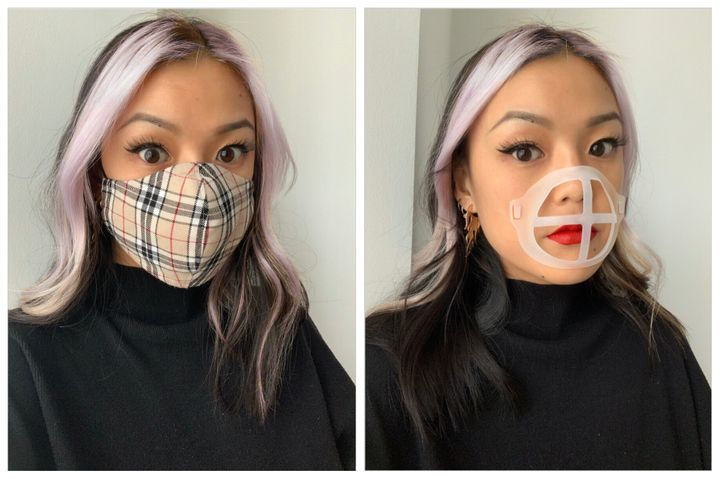Do UV Light Phone Sanitizers Really Work?
- ikbenshop

- Dec 22, 2020
- 3 min read
Updated: Jan 4, 2021
UV sanitizers use ultraviolet light to disinfect your phone and offer a second layer of protection against viruses and other harmful microbes. But can they help protect you from COVID-19? Here's what we know, and a few sanitizers we feel safe recommending.
The best ways to protect yourself against COVID-19 and other contagious illnesses include frequent hand washing, social distancing, and using appropriate personal protective equipment like masks. If you're looking to take your precautionary game to the next level, you might be eyeing any number of UV light sanitizers that have recently flooded the market. But do they work? And if so, which one should you buy? We're here to help you figure it out.
Does UV Light Kill Bacteria?
UV light is one type of electromagnetic radiation that comes naturally from the sun, and can be artificially created with specialized bulbs. There are three types of UV radiation—UV-A, UV-B, and UV-C—none of which can be observed with the naked eye. Of the three, UV-C has the smallest wavelengths (180-280nm) and is the one required for UV disinfection.
Most commercial UV products are sold as sanitizers, and it’s important to note sanitation and disinfection aren't synonymous. Sanitization reduces the growth of bacteria, growth, or fungi. Disinfection, on the other hand, “eliminates many or all pathogenic microorganisms, except bacterial spores, on inanimate objects,” per the CDC.
UV-C light is just one disinfection method and is not yet proven to destroy COVID-19. The EPA keeps a list of COVID-19 approved disinfectants that can be used on various surfaces, but make sure to carefully read the directions, as many of these products aren't tech-friendly.
Do UV Sanitizers Work?
While there isn't proof that UV sanitizers destroy the novel coronavirus, The National Academies of Science, Engineering, and Medicine believe the technology should work. UV light is effective against other coronaviruses like the one that causes MERS, and the US government is working with industry leaders to define standards for UV disinfection technology settings.
Furthermore, CleanSlate, a company that sells UV-C sanitization solutions to the healthcare, hospitality, and food processing industries, released data in July showing that UV-C light can kill 99.979 percent of MS2 bacteriophage, a surrogate for viral human pathogens such as the novel coronavirus, in just 20 seconds. Since most commercial laboratories don't meet containment standards for handling the novel coronavirus, such testing is as close as we can get for the time being.
What the Experts Say About UV Sanitizers
Hundreds of UV sterilizing bags, cases, and wands have flooded the market since the start of the COVID-19 pandemic, but few manufacturers offer any in-depth details about their products, let alone lab tests that show they offer any protection whatsoever.
Andrea Armani, a professor of engineering at the Armani Lab at the University of Southern California, worked with a team of researchers and published Build-at-home UV-C disinfection for healthcare settings earlier this year. In an interview with Discover, Professor Armani discussed her concerns about UV sanitation wands in particular. She says there is no way for consumers to test UV sanitizer wands and recommends people read carefully before making purchases. The product specifications should state the wand is 260 nanometers in range and give a specific duration that is no more than seconds.
Professor Armani also recommends looking at prices, since a high-powered UV-C LED costs about $15 and you’ll need several for adequate sanitation. If you find a wand for $20, it’s most likely not going to provide any protection whatsoever. Finally, she—and other medical professionals—urge users to remember UV-C light is harmful to the skin and eyes.
How to Use a UV Sanitizer
It's clear that UV light shouldn't be your only defense against COVID-19 and other contagions. But if you're going to use it in addition to more proven methods like washing your hands, you should make sure that you are using it correctly.
UV disinfection works best on non-porous objects without a lot of nooks and crannies. If the light isn't able to reach all the exposed surfaces of a device, it won't be very effective. That means you'll want to take your phone (or other device) out of its case and make sure all the ports are open for the best results.
While your device is in the UV sanitizer, you might want to clean the case and the outside of the sanitizer itself with an EPA-approved disinfectant like Lysol. Once the sanitization cycle is complete for your device, place it on a different disinfected surface, let the sanitizer run a second cycle (this is automatic on many units), then place your case in the sanitizer and run yet another sanitization cycle.
Source: Pcmag.com Steven Winkelman September 4, 2020








Comments